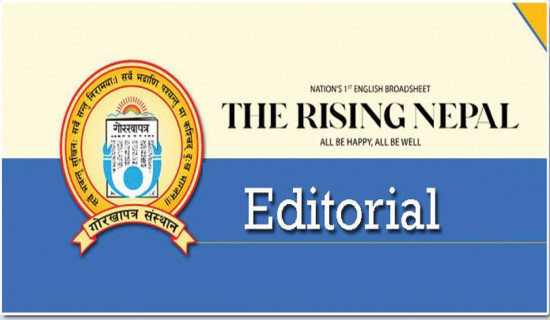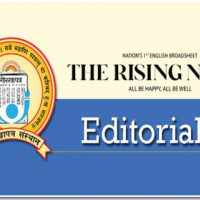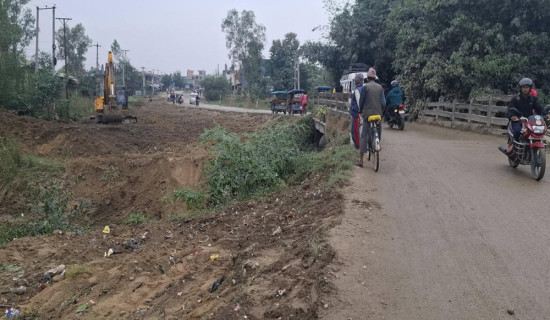- Thursday, 30 October 2025
Aviation Safety Concerns
Air travel is known to be the safest mode of transportation. But that's not entirely the case in Nepal. The frequency at which the country has been seeing airplane crashes is really troubling. On Wednesday a Saurya Airlines plane crashed in Kathmandu, killing 18 of the 19 aboard, with its pilot being the sole survivor. Prior to this, on Jan. 15, 2023, a Yeti Air plane crashed in Pokhara's Seti Gorge, killing 72 on board. Preceding this was another major crash on May 29, 2022 wherein 22 died in a Tara Air plane. Since 1955, there have been 109 crashes, 66 of which deadly, killing nearly 1000. Foreigners account for significant number of the dead.
Nepal has long been criticised for its poor air safety record. Wednesday's crash has reignited the debates about how to make our skies safe. Only the report by the probe committee and revelations by the surviving pilot will provide definitive answers to why the crash happened. Until then, it is anyone's guess or mere speculations. In the meantime, it's worth discussing what experts closely observing the crashes have to say on the matter, as well as ways to make flying safe here. First, mountain travel by plane or helicopter constitute the backbone of our tourism industry and major source of foreign currency earning, so its safety is a prime issue for the country.
Second, Nepal's airliners have been on the European Union's (EU) air safety blacklist since 2013 because of significant aviation security concerns, deterring many tourists from visiting the country. Two aviation-related bills calling for a split in CAAN’s duties and a restructuring of the national aviation sector are pending in the parliament since 2020. If failing to pass the bills is boding ill for the aviation sector, concrete measure must be taken to pass them.
Third, blaming the pilot doesn't help. The Civil Aviation Authority of Nepal (CAAN), the governing body which oversees the entire process of granting licences, as well as training and hiring pilots by airline operators, is equally responsible, if not more. Global aviation watchdogs have questioned the body’s dual role and asked Nepal to break the organisation into two entities – service provider and regulator – to ensure safe air travel.
Fourth, strict enforcement of rules is a must. The fines for breaching aviation rules are said to be nominal, if at all. No one is known to have faced consequences for violating the rules. This must change. Fifth, periodic (normally every sixth months) simulation training for pilots are required to go through. One expert has pointed that, since such training provides crucial experience needed to deftly and calmly handle the situation when things go wrong mid-air, no pilot must skip it. He also felt that Nepali pilots require more exposure and proper training.
Fifth involves poor maintenance of airplanes. A 20-30 year-old plane, experts say, is not old and is so air worthy if its software and hardware are updated and replaced as needed. What is the real problem, however, is delaying this maintenance, they claim. And in a country with lax regulatory system as ours, this can be a recipe for disaster. There must be no 'ifs' and 'buts' or slightest of negligence when it comes to strictly enforcing the regulation if we are to make our planes safe to fly.

















